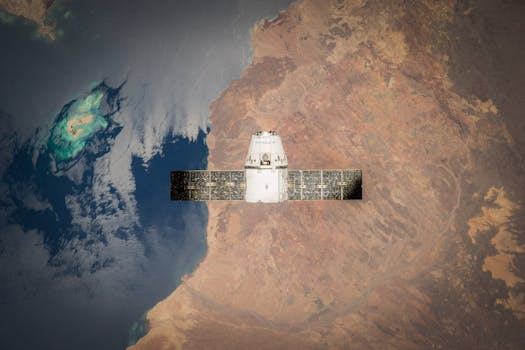
Updates from Above: Essential Insights into the Latest in Satellite Telecommunications
Satellite Telecommunications has been a vital part of global communication systems, providing connectivity to remote and underserved areas. The latest updates in satellite telecommunications are paving the way for a new era of communication, with advancements in technology and infrastructure. In this article, we will delve into the essential insights of the latest developments in satellite telecommunications, focusing on Satellite Telecommunications and its impact on the world.
Introduction to Satellite Telecommunications
Satellite telecommunications involves the use of satellites to transmit data, voice, and video signals from one point to another. This technology has been around for decades, but recent advancements have made it more efficient, reliable, and cost-effective. Satellite telecommunications is used in a variety of applications, including television broadcasting, telecommunications, weather forecasting, and navigation.
Latest Developments in Satellite Telecommunications
There have been several significant developments in satellite telecommunications in recent years. One of the most notable developments is the launch of new satellite constellations, such as the Starlink constellation by SpaceX and the OneWeb constellation. These constellations are designed to provide high-speed internet access to remote and underserved areas, and they have the potential to revolutionize the way we communicate.
Another significant development is the advancement in satellite technology, including the use of new materials and designs. For example, the use of composite materials has made satellites lighter and more fuel-efficient, while advances in propulsion systems have improved the maneuverability and lifespan of satellites. Additionally, the development of new antenna technologies has enabled the creation of smaller, more efficient, and more powerful satellites.
Applications of Satellite Telecommunications
Satellite telecommunications has a wide range of applications, from television broadcasting to telecommunications and navigation. One of the most significant applications is in the provision of internet access to remote and underserved areas. Satellite internet has the potential to bridge the digital divide and provide connectivity to millions of people around the world who lack access to traditional internet services.
Satellite telecommunications is also used in emergency response situations, such as natural disasters and search and rescue operations. Satellites can provide critical communication services in areas where traditional communication infrastructure has been damaged or destroyed. Furthermore, satellite telecommunications is used in the tracking and monitoring of weather patterns, ocean currents, and other environmental phenomena.
Challenges and Future Directions
Despite the many advancements in satellite telecommunications, there are still several challenges that need to be addressed. One of the main challenges is the issue of space debris, which poses a significant threat to the safety and sustainability of satellite operations. Another challenge is the need for more efficient and effective management of satellite spectrum, to prevent interference and ensure that satellite services can coexist with other wireless services.
Looking to the future, satellite telecommunications is likely to play an increasingly important role in the development of new technologies, such as the Internet of Things (IoT) and 5G networks. Satellite telecommunications will be essential for providing connectivity to IoT devices in remote and underserved areas, and for enabling the widespread adoption of 5G services. Additionally, satellite telecommunications will continue to play a critical role in the provision of emergency response services, weather forecasting, and other critical applications.





